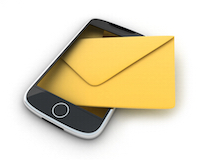
Healthcare providers have Internet Marketing near the top of the list. The Internet has become your new front door, and it commands a serious slice of what’s planned for 2015. And the many forms of your online presence have an important role in attracting new patients, protecting and growing market share, carrying the brand message—and much more.
Now—with “next year” just days away—take a minute for a quick review. There are two closely related words that should jump off the pages of your health care marketing plan:
- MOBILE
If you haven’t been thinking much about these two elements, you might want to take a fresh look at how your plan will roll out. Here’s why these particular words are especially important to your success.
Mobile is marketing’s first screen…
Desktop laptop computers have not completely disappeared, but a lot of eyeballs have moved to the disconnected convenience of mobile devices. Smartphones and tablets—now in an overlapping range of screen sizes—are the mainstream devices of choice for most of us. Smartphone penetration in the US is about 75 percent, and most of us wouldn’t think of leaving home without our iPhone or the like.
One of the key marketing advantages that personal mobile devices have over their desk/lap cousins is that size and portability means a near constant—i.e. immediate—connectivity. More than ever before, healthcare marketing needs to “think mobile.”
Percentages will vary among the demographic segments, but the “small screen” is often the first screen of online users. Mobile devices are a leader in originating online search, including health information, providers and facility locations.
Mobile devices are capable of precision audience targeting for marketing, online advertising, specific purpose apps and other direct-to-consumer (and sometimes two-way) messaging. It seems that almost everyone (75 percent) checks their email via mobile devices. [My.com]
And that brings us to our second discussion point.
The competitive advantage of email in healthcare…
What we know today as email has been around for more than 40 years. And throughout nearly all that time, businesses and medical practices have used email as a fast and inexpensive means to instantly broadcast announcements, newsletters, flyers, and the like to customers and prospects.
Permission-based, outbound email is not new to healthcare marketing, although over the years, the form and format has improved with graphics and video. No doubt email—a one-to-many broadcast tool—continues to have an important role in your marketing plan.
But what is new is that patients and prospective patients expect—and are now demanding—that their doctor communicates with them by email. For many people, email is the expected standard; the communications means and method that patients routinely use for other matters.
Until recently, physicians and medical practices—who routinely use email in business—have been reluctant to adopt patient-direct (one-to-one) email communications. But that picture is changing.
As many as nine out of 10 adults (93 percent) want email communications with their doctor, and would likely choose a doctor that offers email communications, according to Catalyst Healthcare Research (CHR). What’s more, of this 93 percent, 25 percent said they would still prefer a doctor that uses email communication even if there was a $25 fee per episode.
Many challenges remain in opening the door to doctor-patient email communications. But one of the overarching marketing advantages that the concept holds is the distinction and differentiation for early adopter practices. Being first-to-market is a distinct branding and competitive advantage.
Increasingly, physicians are aware of the marketing and business advantages as they leverage digital technology. Many entrepreneurial providers are beginning to embrace innovations including patient email access, online appointment scheduling, and access to laboratory data.
Please take a moment with your upcoming marketing plan and how “mobile” and “email” will be an important factor in reaching your goals.

